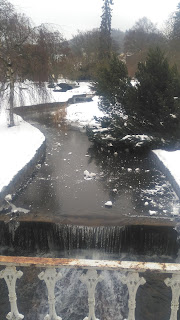Numerous are the strong players who have swopped pawns in the hope of getting a draw when Black was considerably higher-rated or when a draw suited the tournament situation.
A famous example of the latter is at the 1990 Interzonal when Mikhail Gurevich needed a draw as White against Nigel Short to qualify for the Candidates'.
Gurevich switched to 1.e4 - an unusual choice for him - played the Exchange and suffered his only career loss against Short as White.
Another famous game in the French Exchange dates back to 1978 when Italian IM Stefano Tatai lost in 14 moves as White against Soviet GM Viktor Korchnoi.
Nigel Davies gives the Tatai-Korchnoi game on his French Strategy ChessBase DVD, where Davies says the French Exchange is only a drawing weapon when both players want a draw.
I think one of the problems of playing the French Exchange to draw as White is the danger of getting into a wrong mindset.
That is why I was quite pleased when my opponent in the last round of the Mariánské Lázně Seniors chose it this morning.
Peter Pekarcik is a Slovak without a Fide rating but had a tournament performance over the first eight rounds of 1720.
Pekarcik - Spanton (1943)
French Defence, Exchange Variation
1.e4 e6 2.d4 d5 3.exd5 exd5 4.Bd3
White's most popular choice in ChessBase's 2019 Mega database, but it is interesting that when Carlsen, Kasparov and Kramnik have played the French Exchange they preferred 4.Nf3.
4...c5!?
Much more popular are 4...Bd6, 4...Nc6 and 4...Nf6 but I remembered the text as being Korchnoi's pick against Tatai.
 |
| Black's 4...c5!? to a certain extent unbalances the position |
Tatai played 5.Nf3 and the game continued 5...Nc6 6.Qe2+ Be7 7.dxc5 Nf6 8.h3 0-0 9.0-0 Bxc5 10.c3? (too slow) Re8 11.Qc2? (11.Be3 was better but Black would still have an advantage) Qd6! (Korchnoi has a quick kingside attack in mind) 12.Nbd2 (Tatai is in big trouble after this but my main analysis engines Stockfish10 and Komodo9 cannot find a good move for White) Qg3 13.Bf5? (it seems that best was giving up a pawn by 13.Nd4 Nxd4 14.cxd4 Bxd4 15.Qb3, which at least prevents 15...Bxh3?? because of the reply 16.Bxh7+) Re2 14.Nd4 (there is nothing better) Nxd4 0-1 Tatai - Korchnoi, Beersheba 1978 (resignation is justified as Black will lose a pawn on d4 with further material loss to come).
The text is the commonest move in Mega19 but with it White scores just 37%.
5...Bxc5 6.Qe2+ Ne7 7.c3?!
The same slow move as played by Tatai, albeit not in exactly the same position. Morphy's games show development tempi are important in the French Exchange, which is why it is sometimes classified as an open game (rather than semi-open) because of the central pawn-exchange.
7...0-0 8.Nf3 Re8
Not 8...Bg4? 9.Bxh7+.
9.0-0 Bf5
The aggressive ...Bg4 is still not possible but it would be after 9...Ng6. Another sensible move for Black is 9...Nbc6.
10.Be3
The engines reckon White equalises(!) with 10.Bxf5 Nxf5 11.Qd3.
10...Bxe3 11.Qxe3 Ng6 12.Qd2 Bg4 13.Nd4 Nc6 14.Nxc6!?
Getting another pair of pieces off the board but strengthening Black's centre.
14...bxc6 15.Na3 Qd6 16.Nc2 Nf4 17.Ne3 Qd7 18.Qc2?!
I do not like this as it spends a tempo to force me to protect against a back-rank mate.
18...h6 19.Rae1 Rab8 20.b3 Re5 21.Nxg4 Qxg4 22.f3?!
Probably better is 22.g3 as the try 22...Qf3!? is only good enough for a draw after 23.gxf4 since the newly arrived pawn at f4 covers the g5 square.
22...Qg5?
More forcing is 22...Qe6 which effectively forces a transposition to the game position after White's next move.
23.Rxe5?
Definitely better is 23.g3, eg 23...Rbe8 24.Rxe5 Rxe5 with, at best, a small edge for Black.
23...Qxe5 24.g3??
But now g3 is a blunder, although the engines reckon Black has the upper hand, meeting 24.Rd1 or 24.Qd2 with 24...Re8.
24...Qe3+ 0-1
My win means I finish the tournament on +4=2-3, losing 23.8 elo.

































